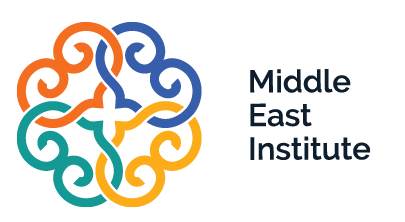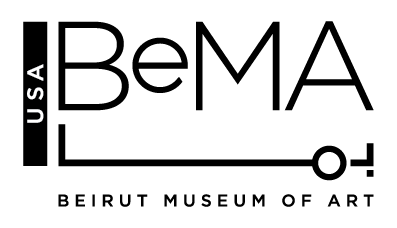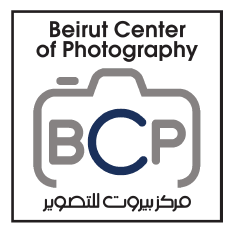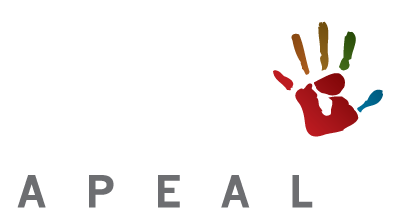
Lebanon Then and Now: Photography from 2006 to 2020
Curated by Chantale Fahmi
July 13, 2020 - September 25, 2020
Lebanon Then and Now: Photography from 2006 to 2020 is a unique collaboration between cultural institutions spanning Washington, D.C., Paris, and Beirut with one shared goal: to bring into focus through photography some of the dizzying social, political, and economic developments that have marked Lebanon over the past decade and a half. Produced by the Middle East Institute with the Institut du Monde Arabe (IMA) in Paris and the Beirut Museum of Art, USA (BeMa USA) Lebanon Then and Now presents under one virtual roof selections from two seminal shows, Lebanon: Between Reality and Fiction and Revolt. Developed by curator Chantale Fahmi, this new exhibition furthers our understanding of both the historical past and Lebanon today.
Lebanon: Between Reality and Fiction (September 11 - November 24, 2019), organized by IMA, featured nineteen photographers, artists, and filmmakers, many of them Lebanese women, who explored the aftermath of Lebanon’s long civil war (1975-1990) through the lens of its social, urban and geographic realities. Revolt (November 14, 2019 - February 18, 2020) was organized by the Beirut Center of Photography (BCP) and the Association for the Promotion and Exhibition of the Arts in Lebanon (APEAL) in response to the street protests that erupted October 17, 2019 over Lebanon’s political and financial mismanagement. Eleven documentary photographers captured the raw energy of country-wide protests in an outdoor exhibit space in downtown Beirut close to the site of the protests.
The repositioning of these two bodies of work serves as a visual storyline that provides insight into the origins of the current crisis and links it to today’s uprising of the Lebanese in the face of their country’s political and financial collapse. Featuring 17 Lebanese photographers, 50 images, and one filmmaker, Lebanon Then and Now brings the Paris and Beirut shows into a dialogue with each other, revealing subtle foreshadowing and parallels across the decades. Collectively, they demonstrate the power of photography - from art photography to photojournalism - to capture the different realities and emotions that have led Lebanon to this challenging moment in time
Originally planned as a physical exhibit for the summer of 2020 in the newly launched MEI Art Gallery, Lebanon Then and Now has been reimagined as a virtual exhibit in light of MEI’s temporary closure due to the global coronavirus pandemic. Lebanon has also been affected by the pandemic, as captured in the exhibition’s four closing images of an empty Beirut, providing a moment of quiet to reflect on Lebanon’s future. How will this small country, whose global cultural influence outstrips its size and geography, emerge from the confluence of a financial collapse and political crisis compounded by the pandemic? A ray of hope is found in the resilience of the Lebanese people revealed in the photographs, as well as in the photographers and artists themselves. They underscore the strength and vibrancy of the country’s creative sector and its vital role in documenting Lebanon’s unfolding history, while holding accountable its powerbrokers.
Selections from Lebanon: Between Reality and Fiction
Curated by Hanna Boghanim
These selected photographs from the exhibit Lebanon: Between Reality and Fiction curated by Hanna Boghanim for the Institut du Monde Arabe in Paris (September 11, 2019 - November 24, 2019) explore Lebanon’s creative scene through the work of its contemporary photographers.
Lebanon’s long civil war (1975-1990) left many of the causes of the conflict unresolved. And today, its artists are tackling the political, economic and social consequences of the country’s years of upheaval. While Lebanese photographers who lived through the war felt a moral obligation to root their work in themes related to memory and remembrance, the artists of this new generation offer a fresh perspective that looks at the more immediate issues and crises shaping Lebanese society. Nineteen photographers, filmmakers and artists participated in the Paris show. Seven Lebanese photographers and a Milan-based filmmaker have been selected for Lebanon Then and Now.
The seven photographers, five of whom are based in Lebanon, have never before been shown in the United States and reflect the vibrancy of Lebanon’s creative sector. Their photographs bear witness to today’s Lebanon. The selected photos deal with a wide array of subjects, including the country’s urban reality, the role of women in society, as well as the importance of memory and history. They also express, for many, the pursuit of a far-off place and the desire to escape.
Myriam Boulos is interested in the aspirations of today’s youth and questions the role and place of women in Lebanese society. Women are also the focus in the work of Lamia Maria Abillama, who explores the relationship of women to war. In this work, she asks her subjects to don military fatigues — their lives to this day shaped by the impact of war on their society. Similarly, war and loss are at the heart of Dalia Khamissy’s work, which highlights the grievances of the families of the missing, who continue to demand government accountability for the fate of their loved ones. Maria Kassab turns to digital collage and the thematic of the sea to explore the pain associated with war and separation.
Vicky Mokbel takes on corruption by turning her camera on the modernist structure housing Electricite Du Liban (EDL), the government agency responsible for Lebanon’s power sector. To this day, the Lebanese live with frequent power cuts. İeva Saudargaité Douaihi documents Lebanon’s built environment, revealing the country’s frenzied transformations, while Vladimir Antaki’s digitally composited facades serve as a love letter to Beirut’s hidden architectural gems, too often erased by the city’s rampant urban development.
Finally, the film by Italian documentary maker Tanino Musso, Beyrouth Centre Ville, exploring the devastation to the center of Beirut caused by 15 years of civil war, reminds us just how far Lebanon has come since the film was made in 1991, one year after the end of the war.
- Hanna Boghanim
Selections from Revolt
Curated by Chantale Fami
Photography is arguably the most instant medium at an artist’s disposal, making it a powerful tool for capturing the energy and intensity of the street protests that broke out in Beirut on October 17, 2019 in response to the government’s proposed tax on the use of WhatsApp, a free internet voice-call service.
Lebanese photographers were an important presence in the early demonstrations, which erupted in cities and towns across the country, uniting Lebanese of all sects against the corruption and mismanagement of the country’s political elites. They served as the narrators of this unprecedented period in time, helping inform local and global audiences about the unique nature of the revolt.
In response, the Beirut Center of Photography (BCP) and the Association for the Promotion and Exhibition of the Arts in Lebanon (APEAL) collected the works of eleven young Lebanese photographers and organized an open-air exhibition. Curated by Chantale Fahmi, Revolt was mounted in downtown Beirut around ‘The Egg,’ an iconic unfinished movie theater that became a headquarters for the protesters. The billboard-size images hung from November 15, 2019 until late February 2020, serving as a mirror of the protests, until a combination of counter-protesters and the natural elements brought the exhibit to an end.
These selections from Revolt, including the work of Pierre Aboujaoude, Hussein Beydoun, Blanche Eid, Jana Khoury, Emilie Madi, Elias Moubarak, Badr Safadi, Omar Sfeir, Jack Seikaly, and Marwan Tahtah remind us of the critical role played by documentary photographers in capturing not just the immediacy of a moment, but in serving as the archivists of social memories for the next generation demanding social justice and accountability.















